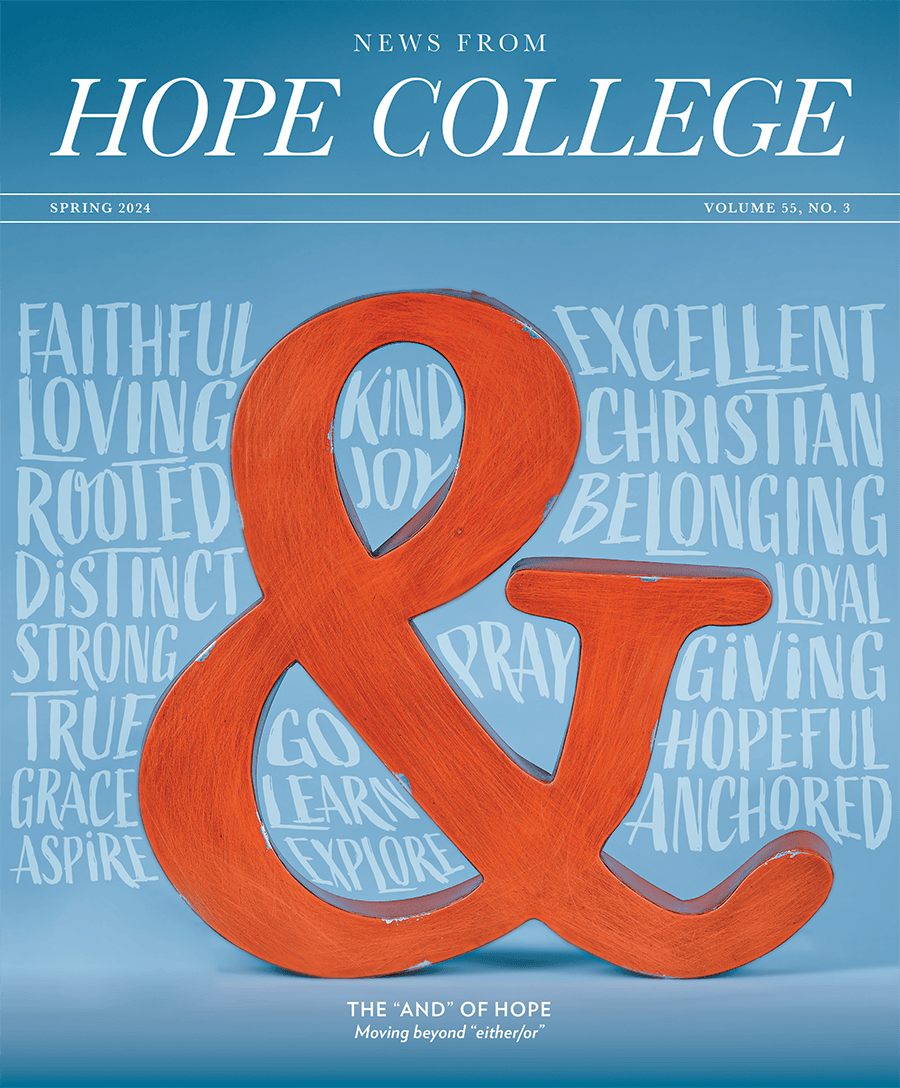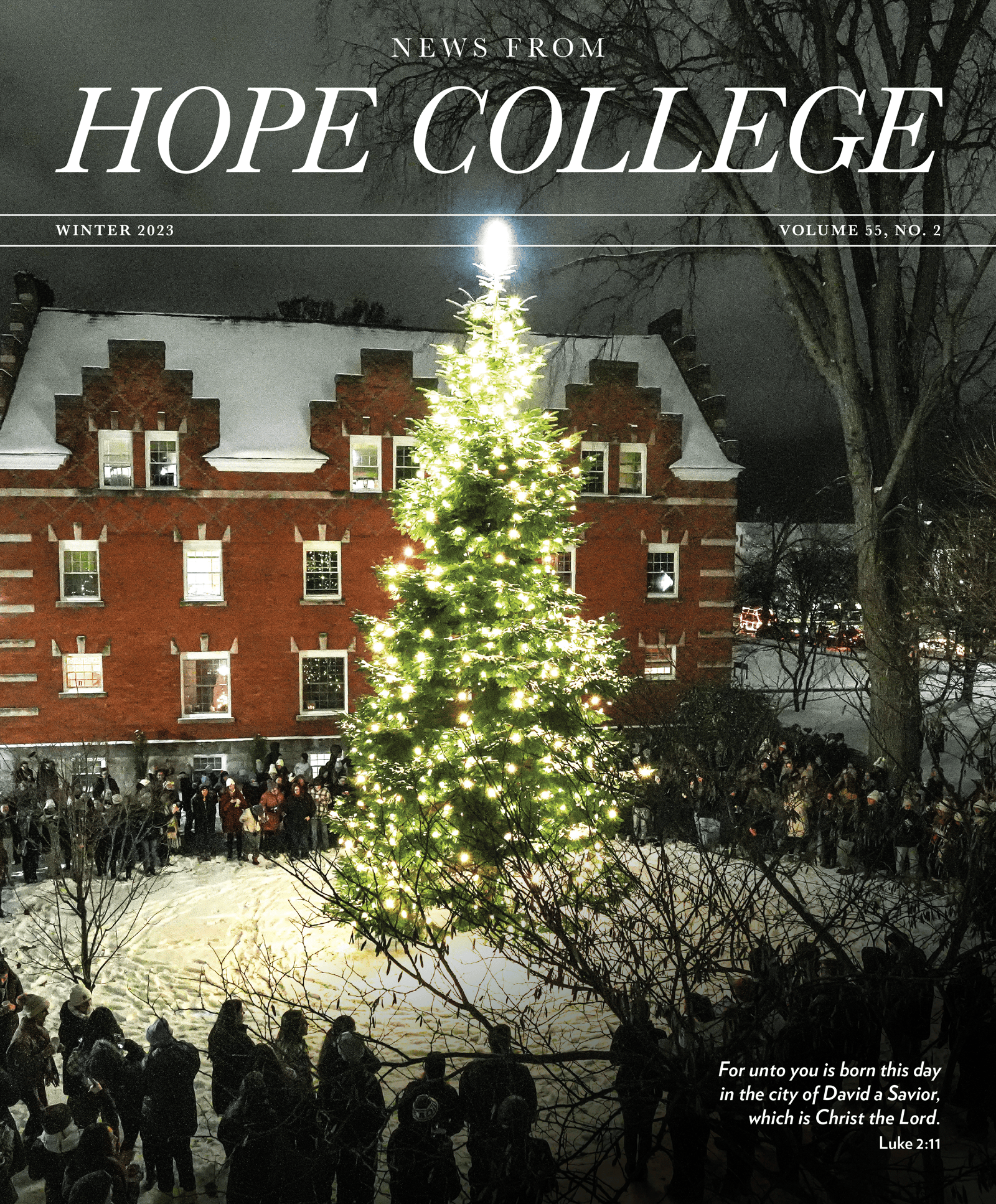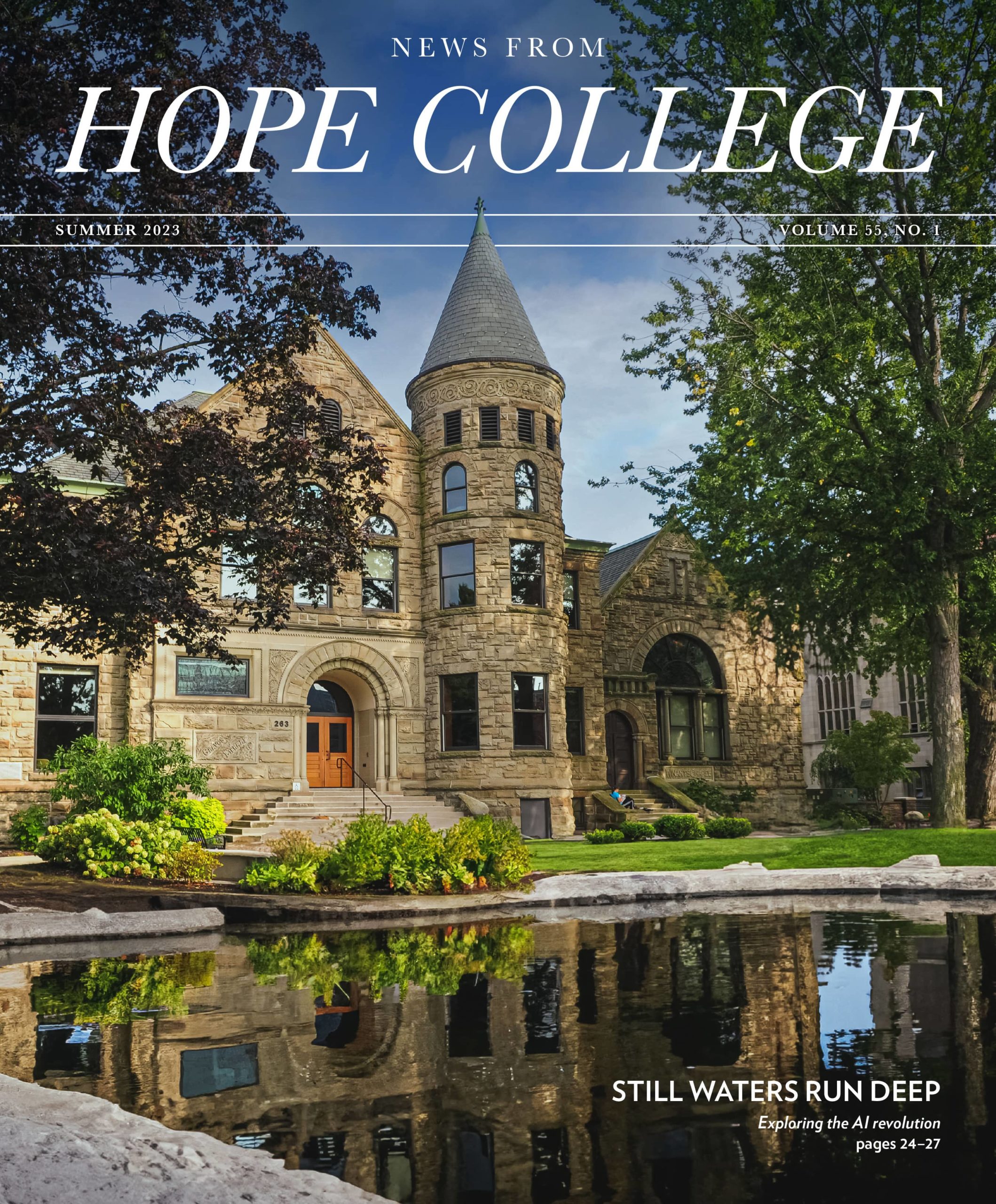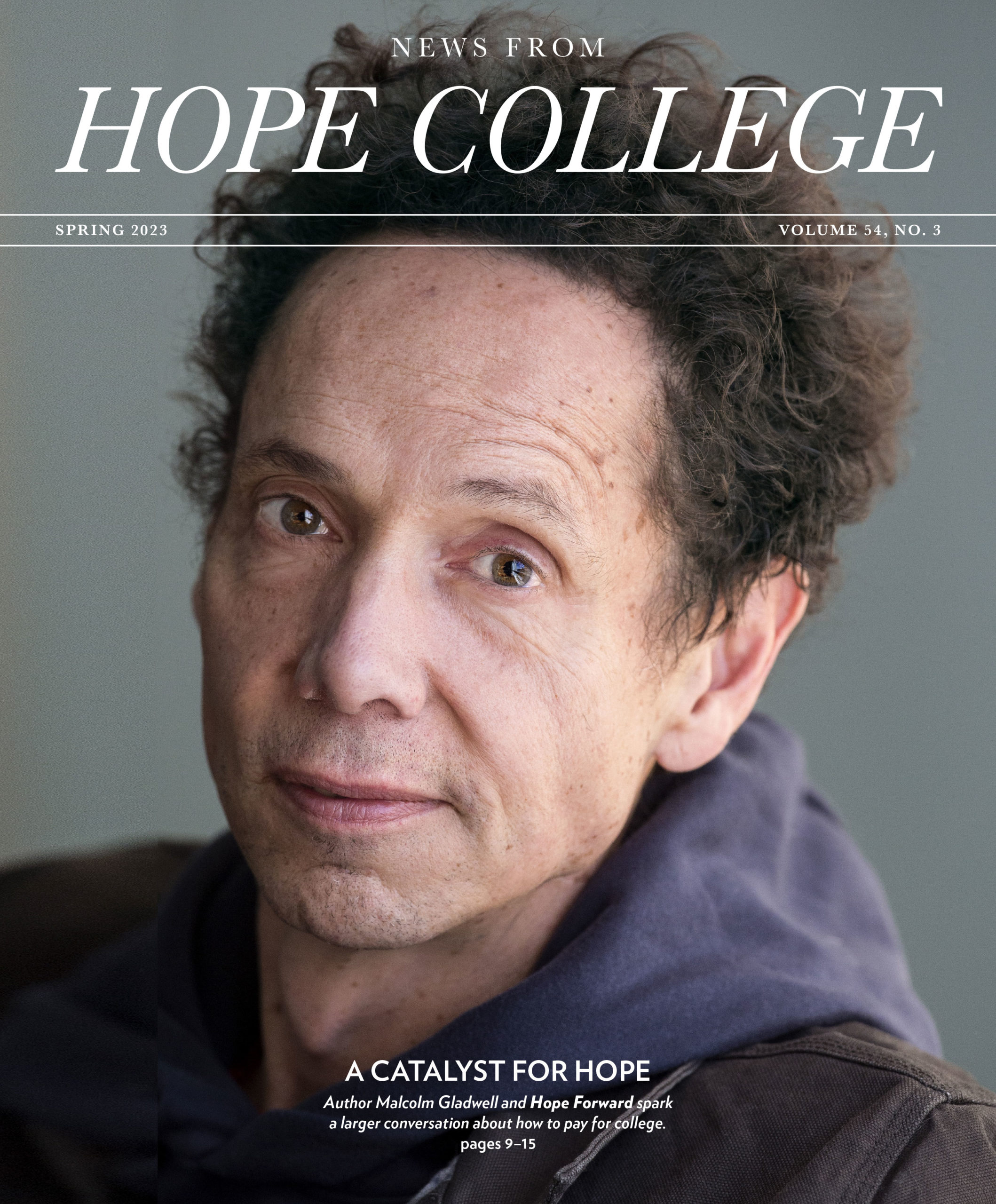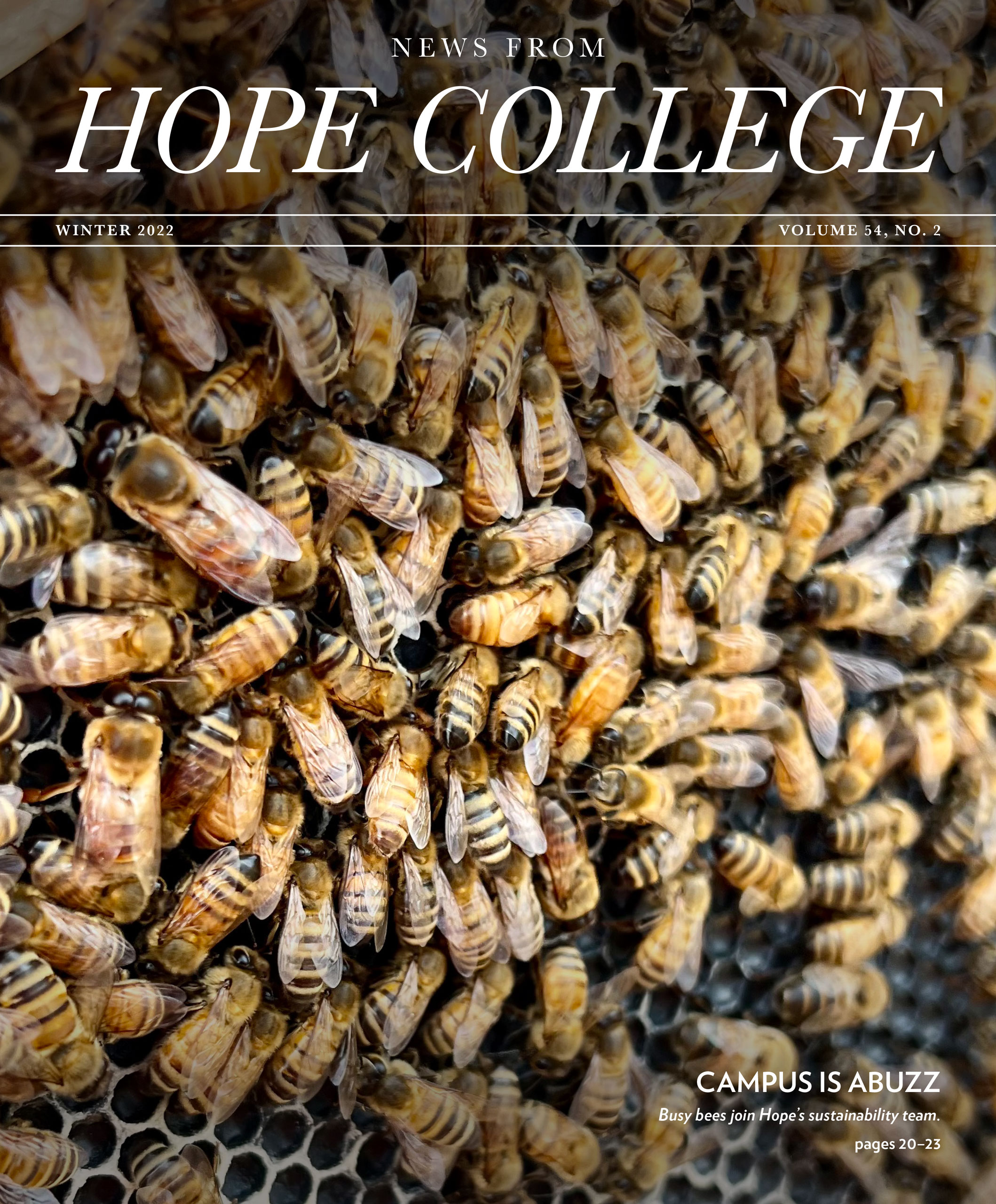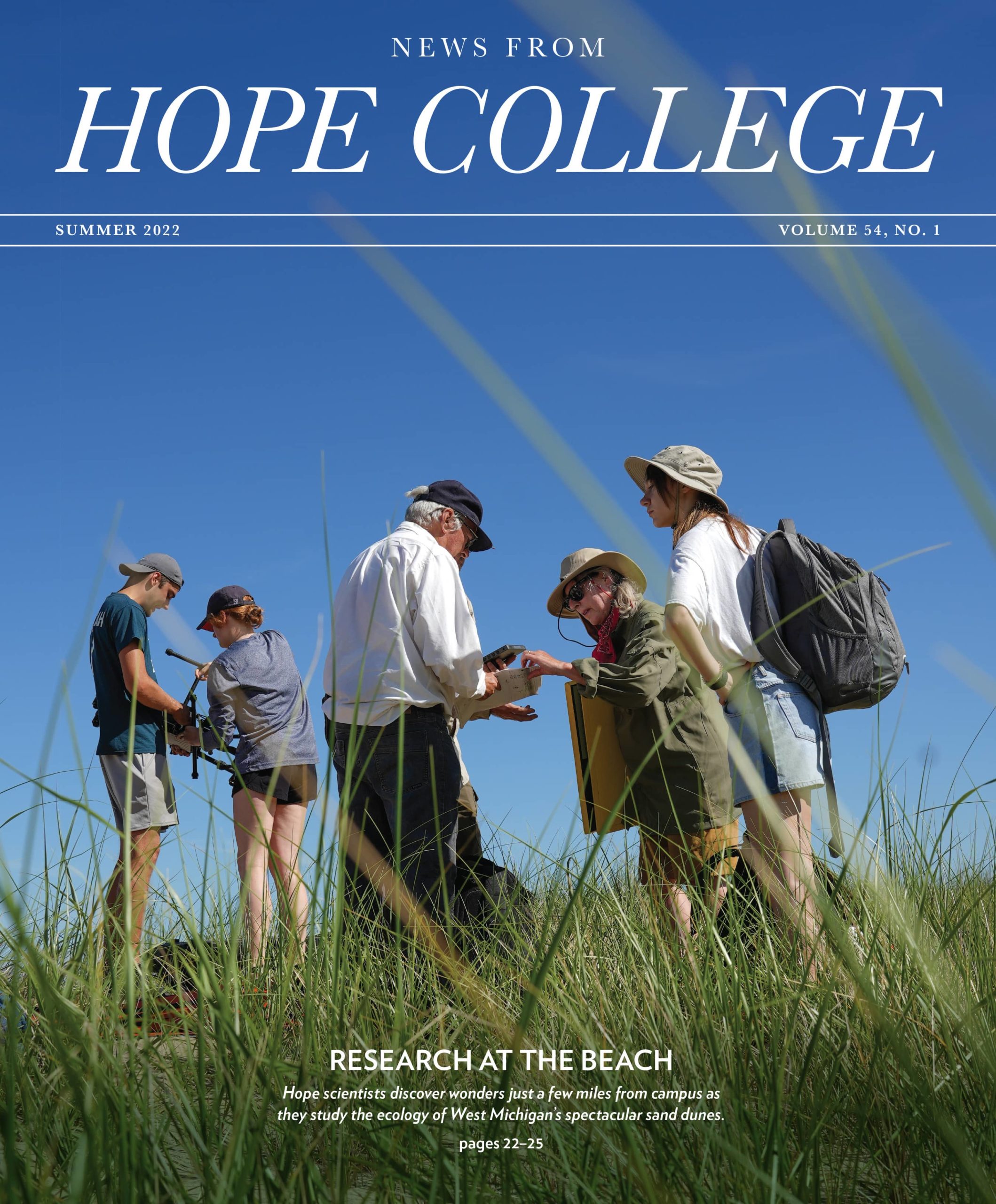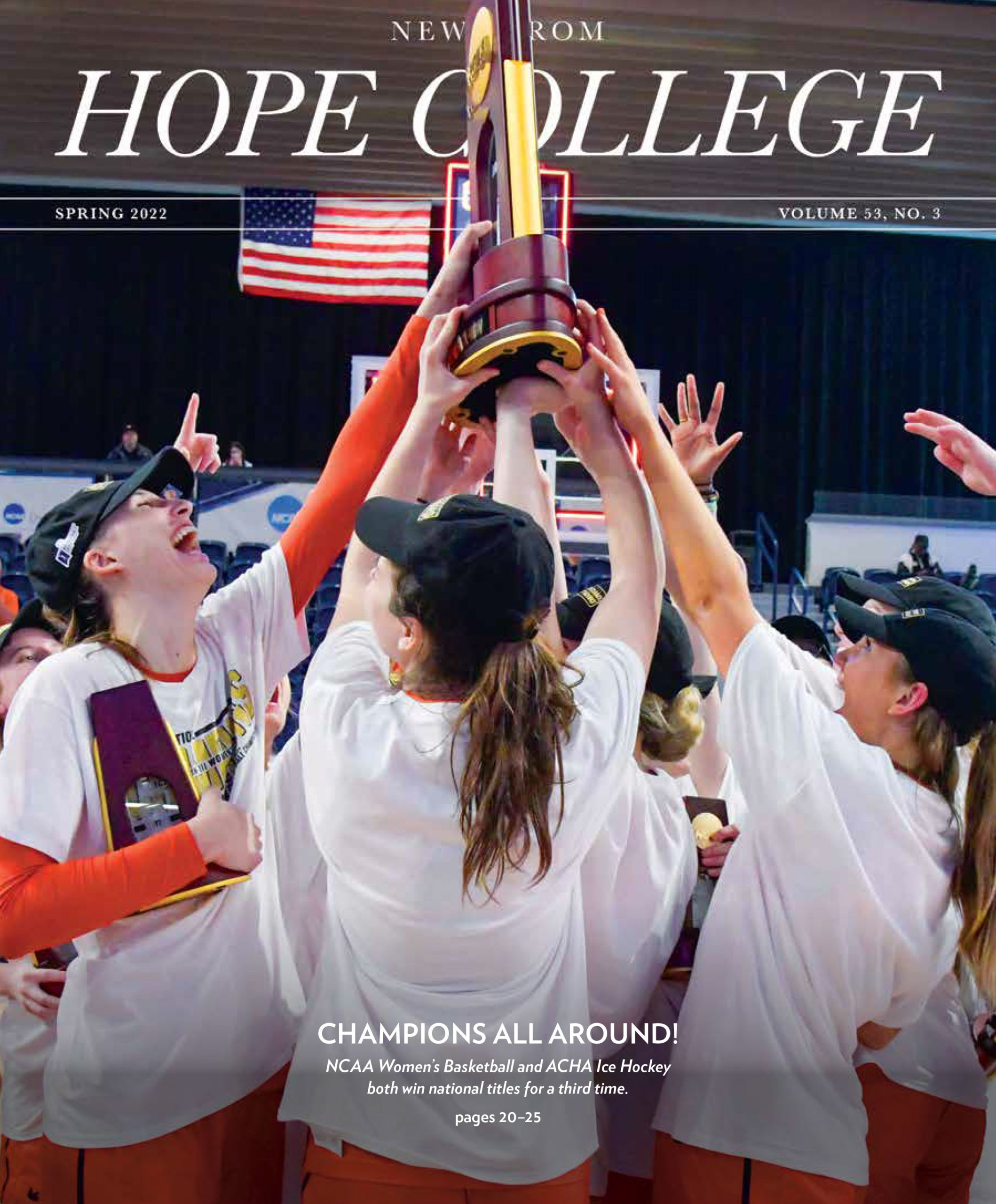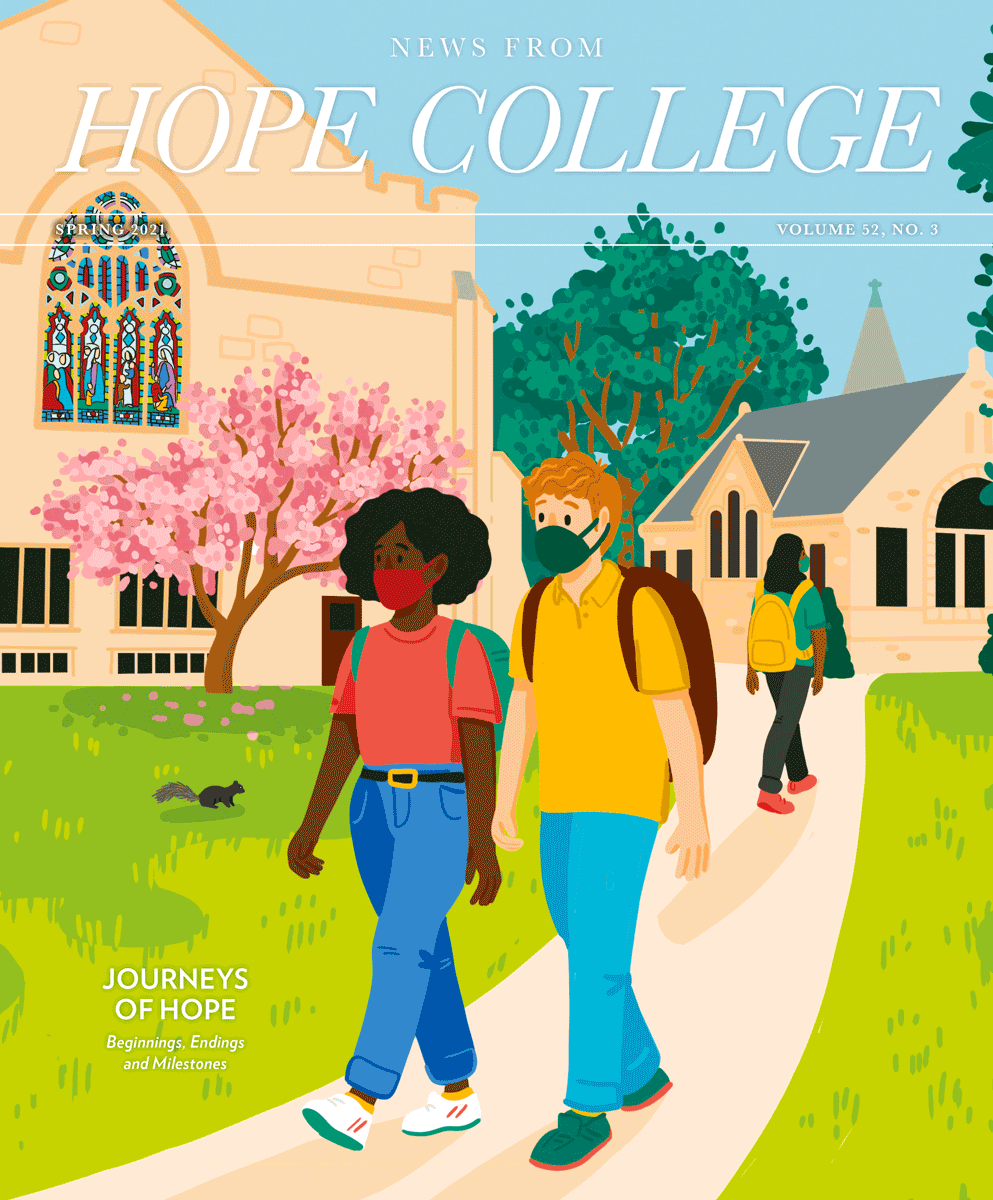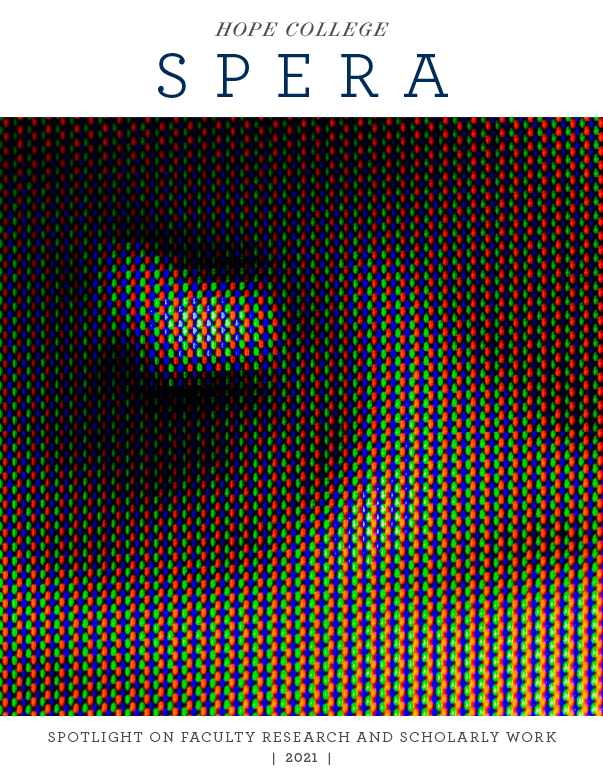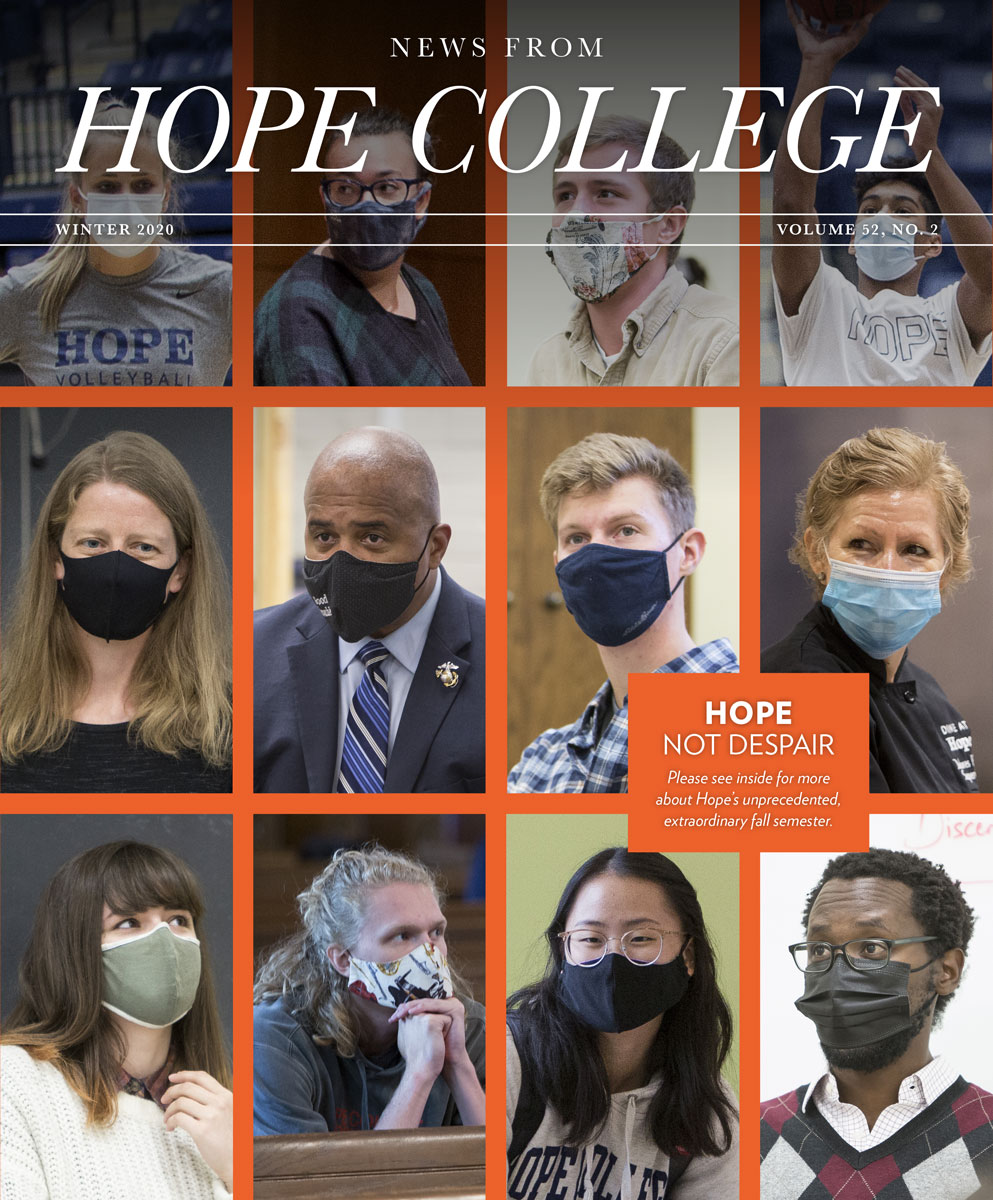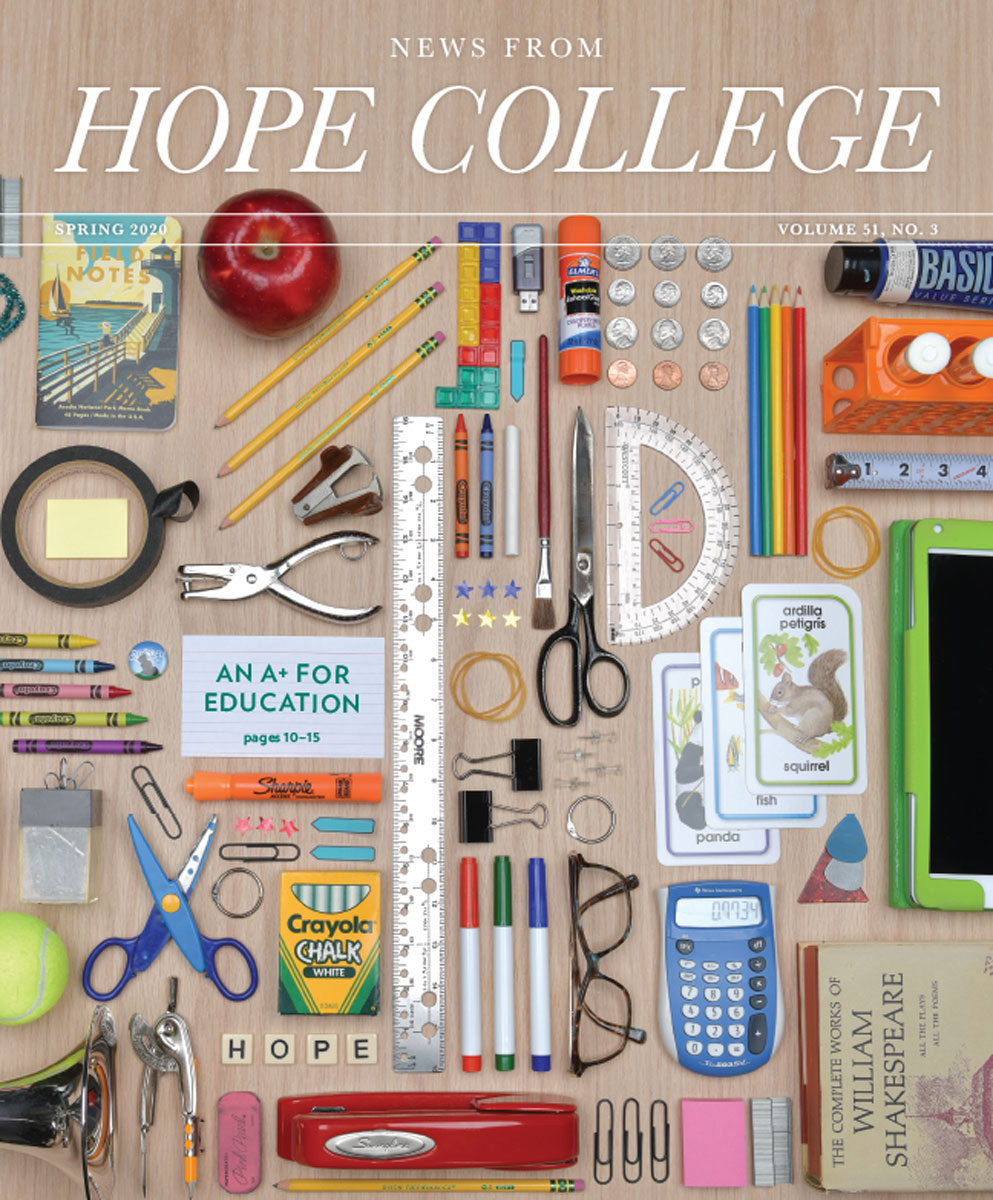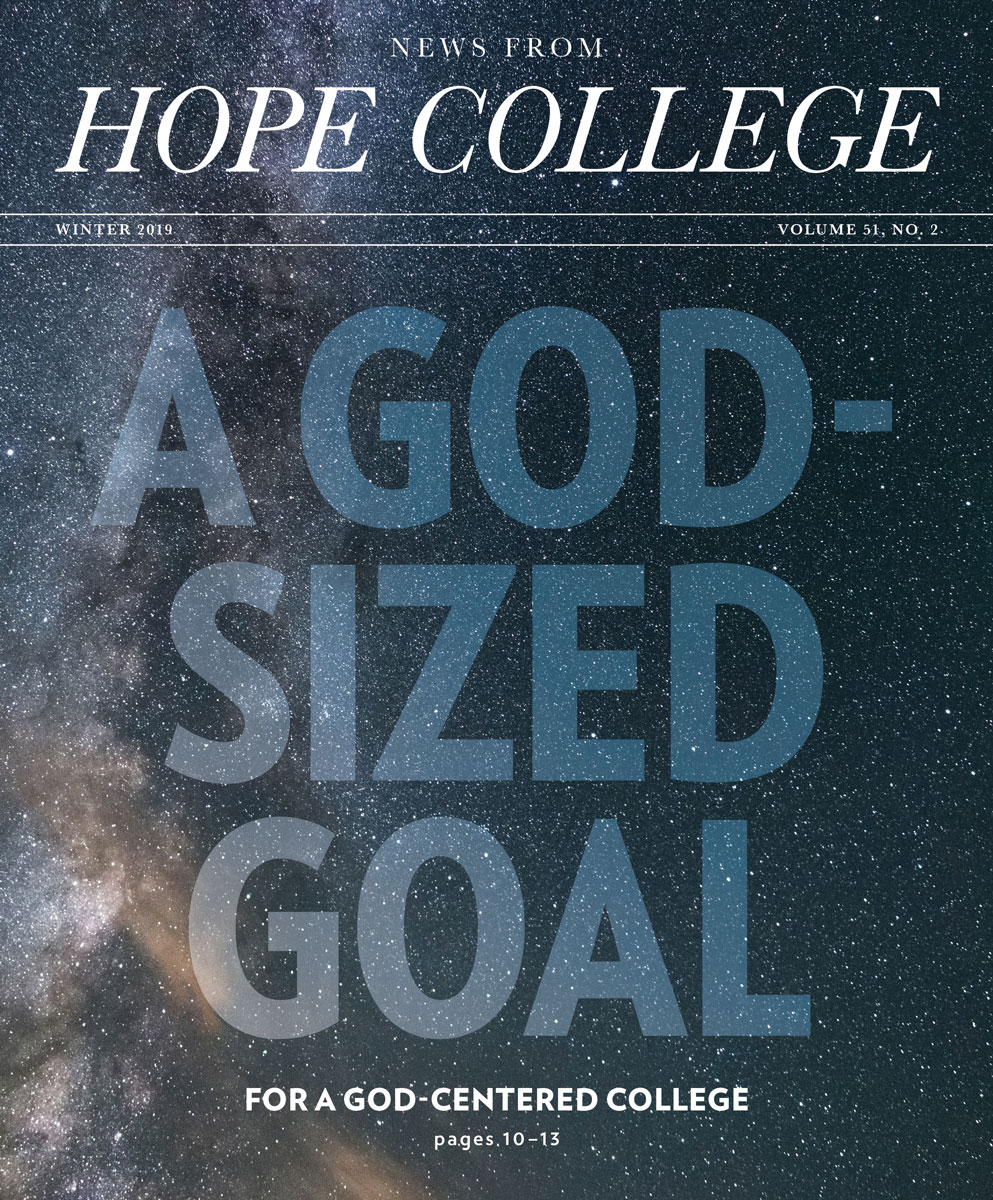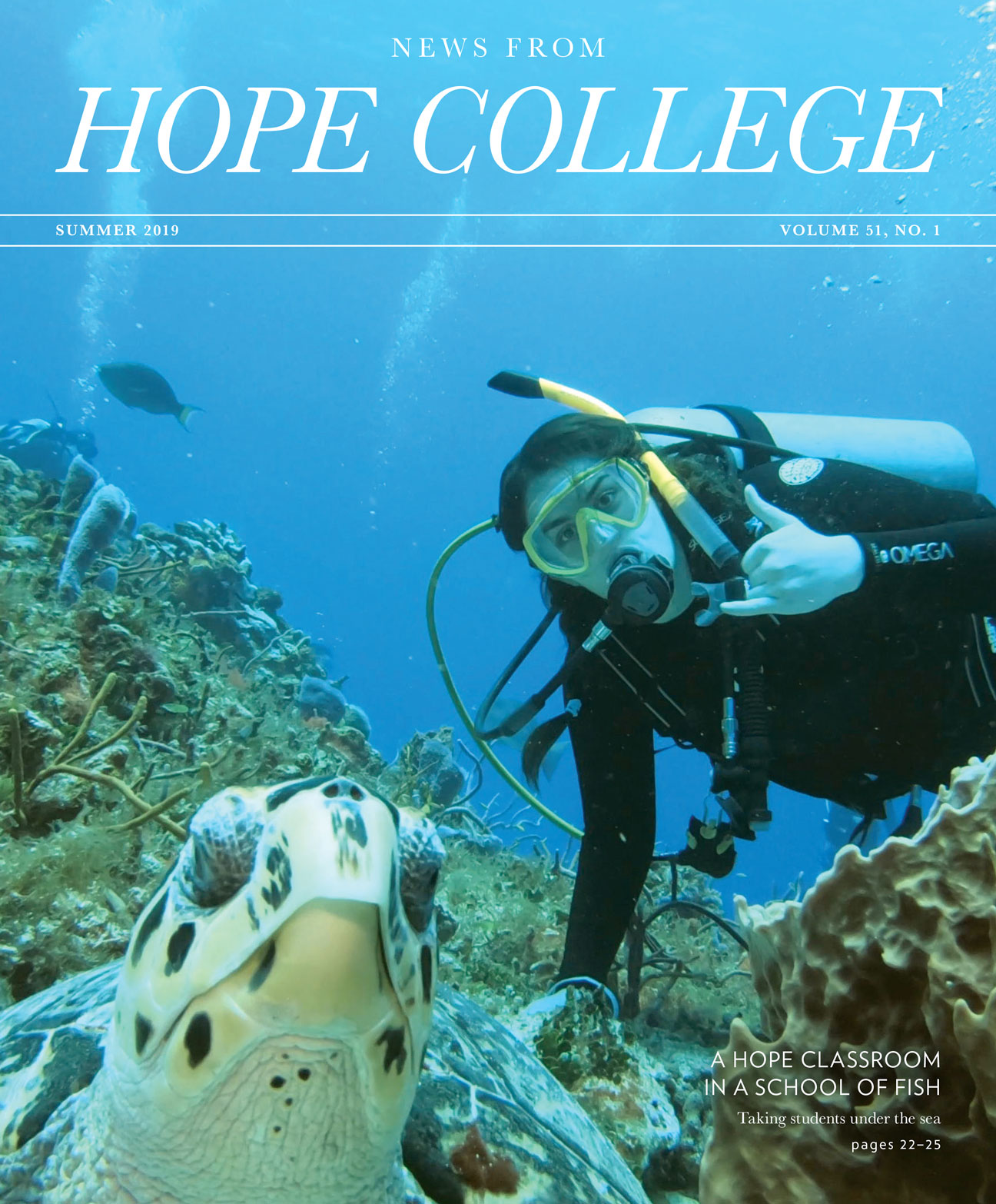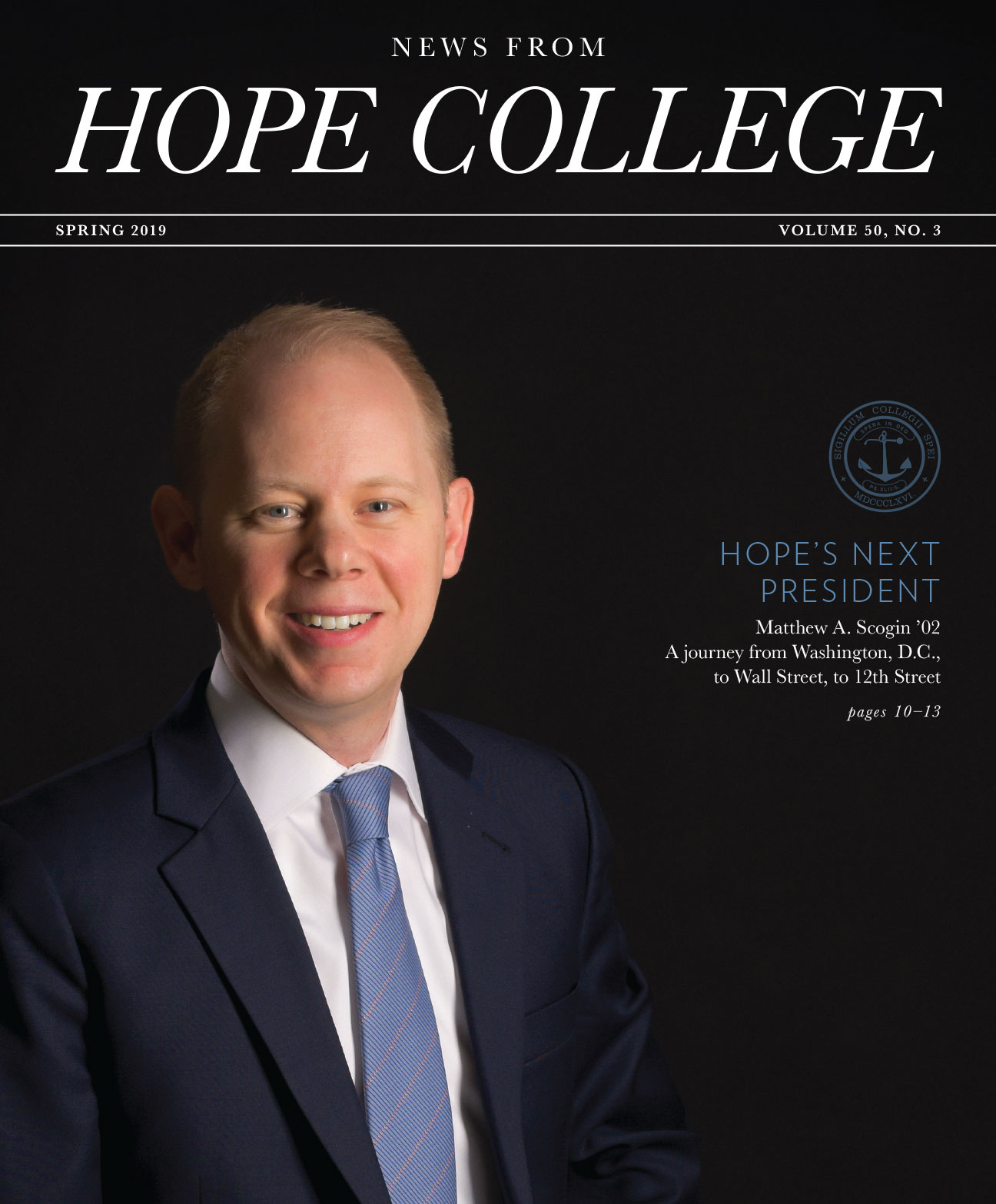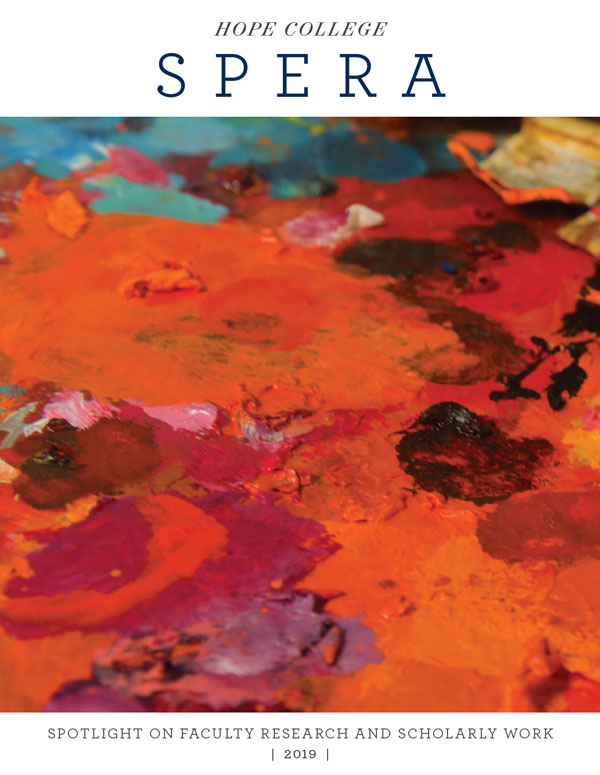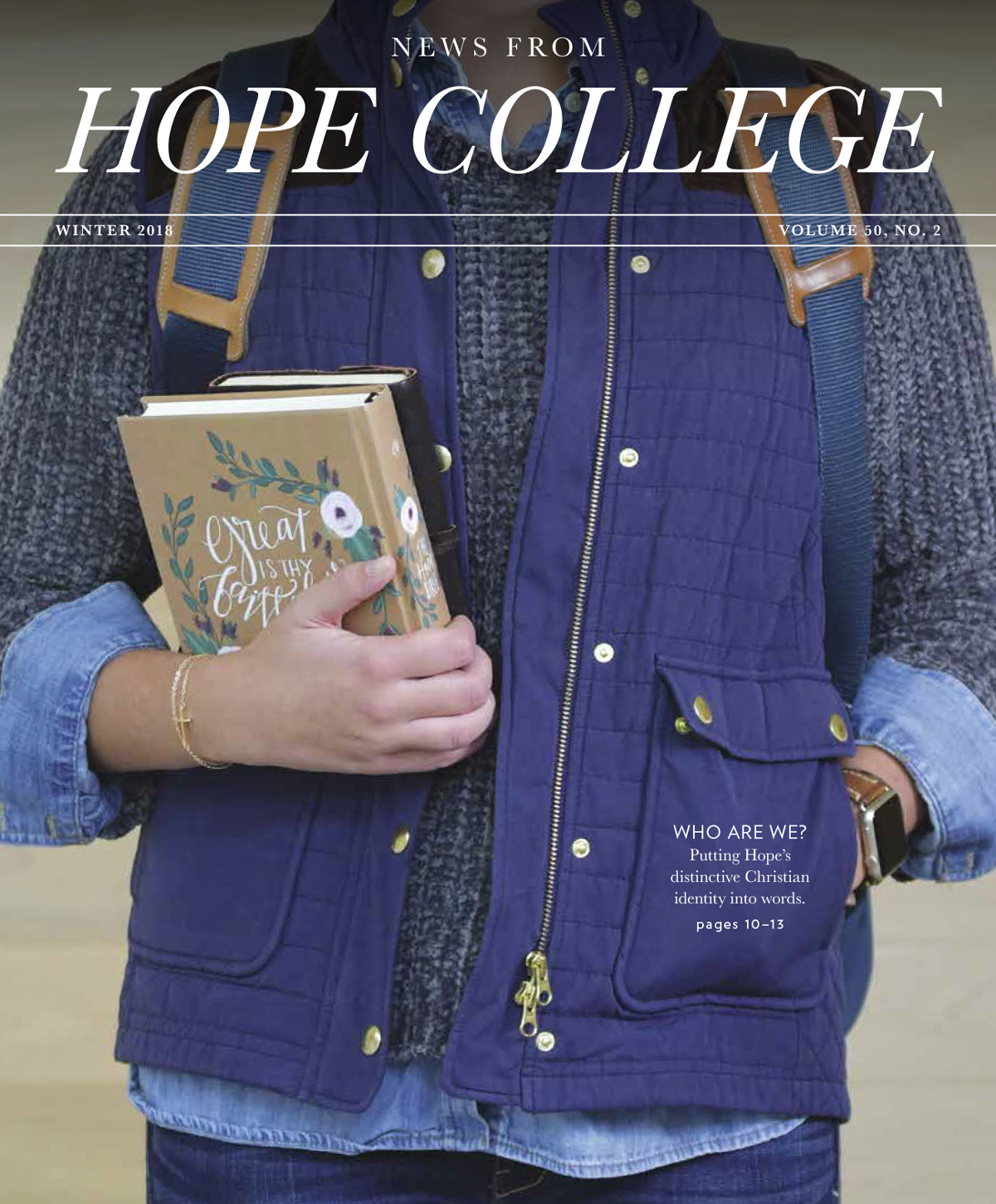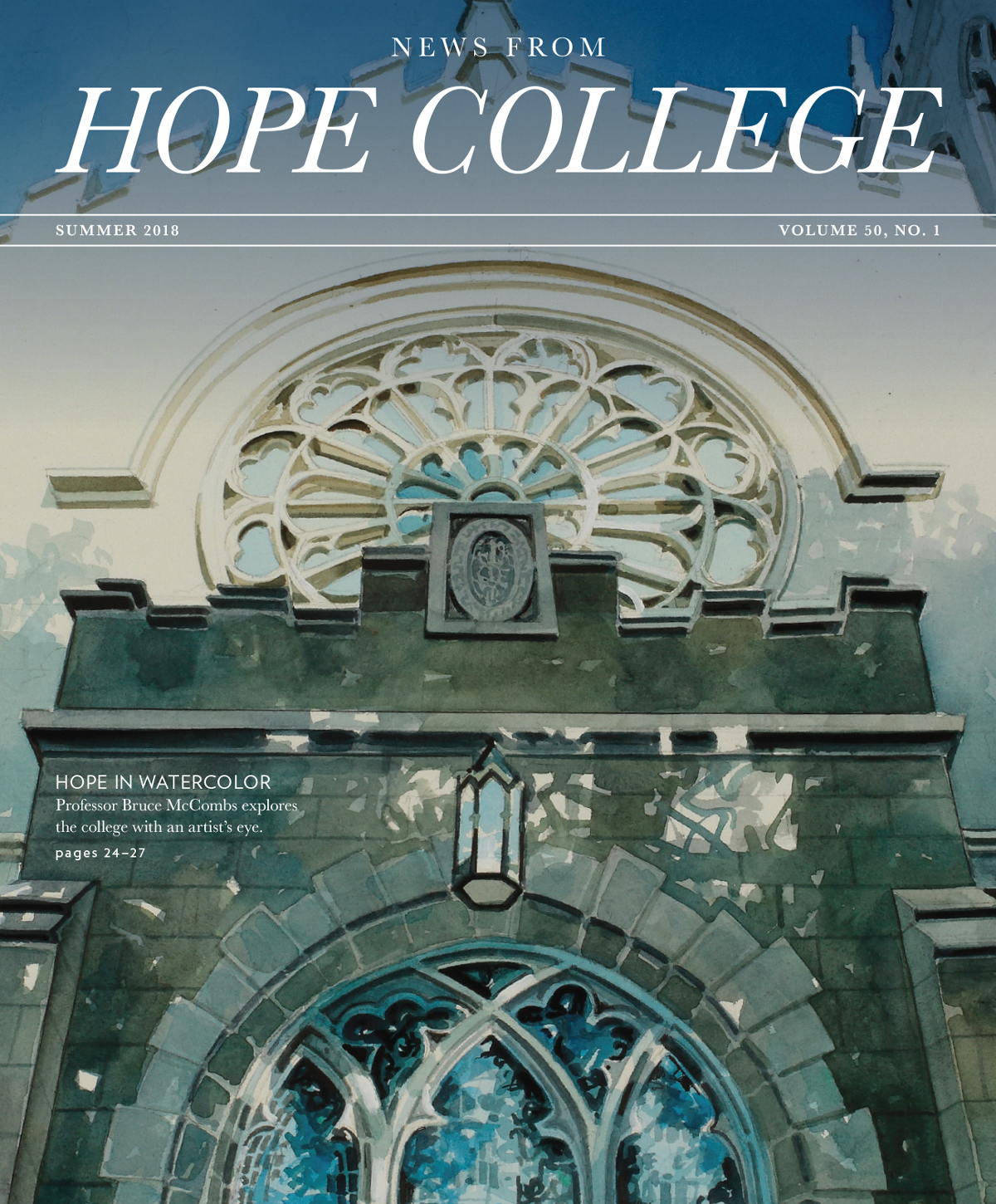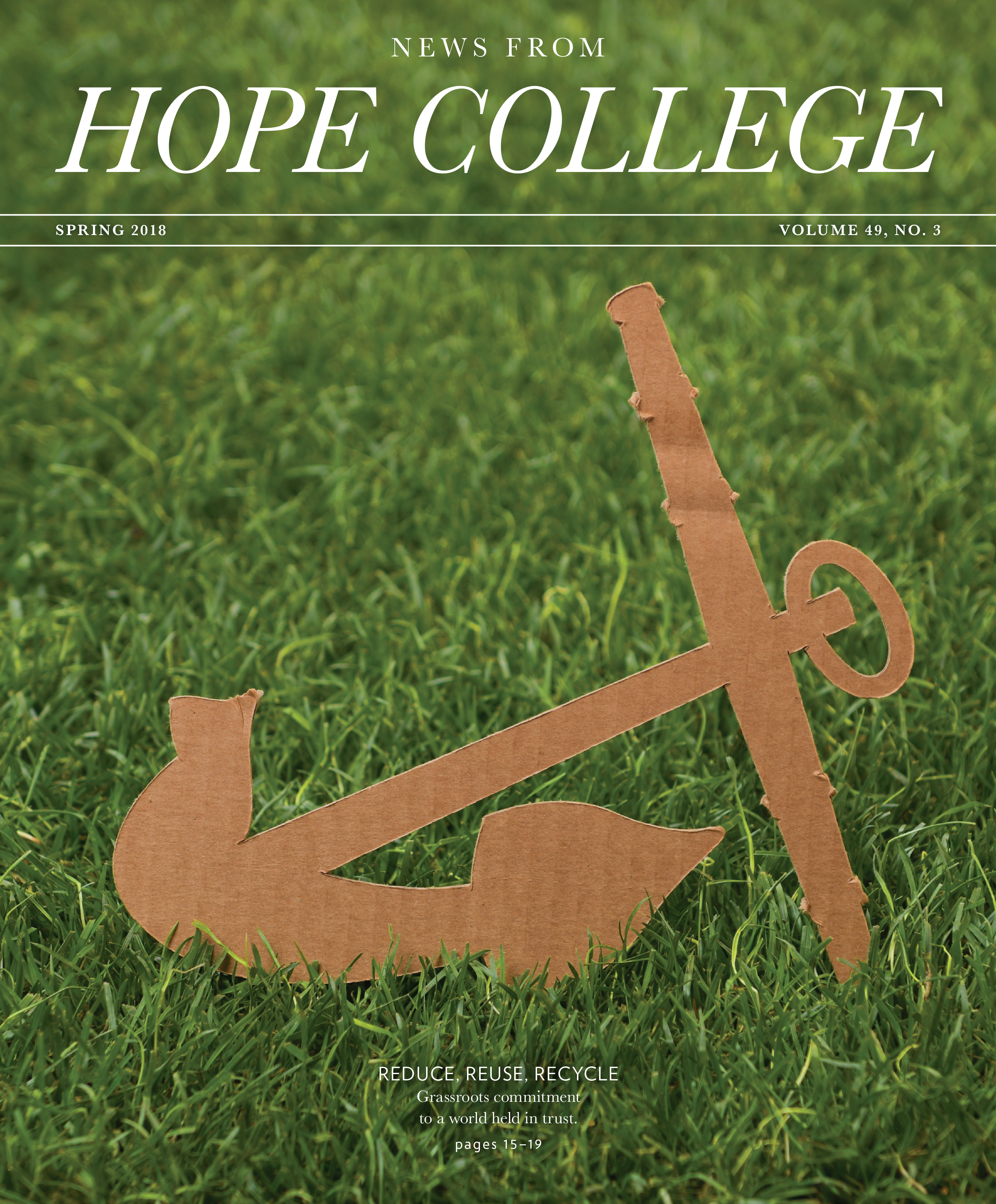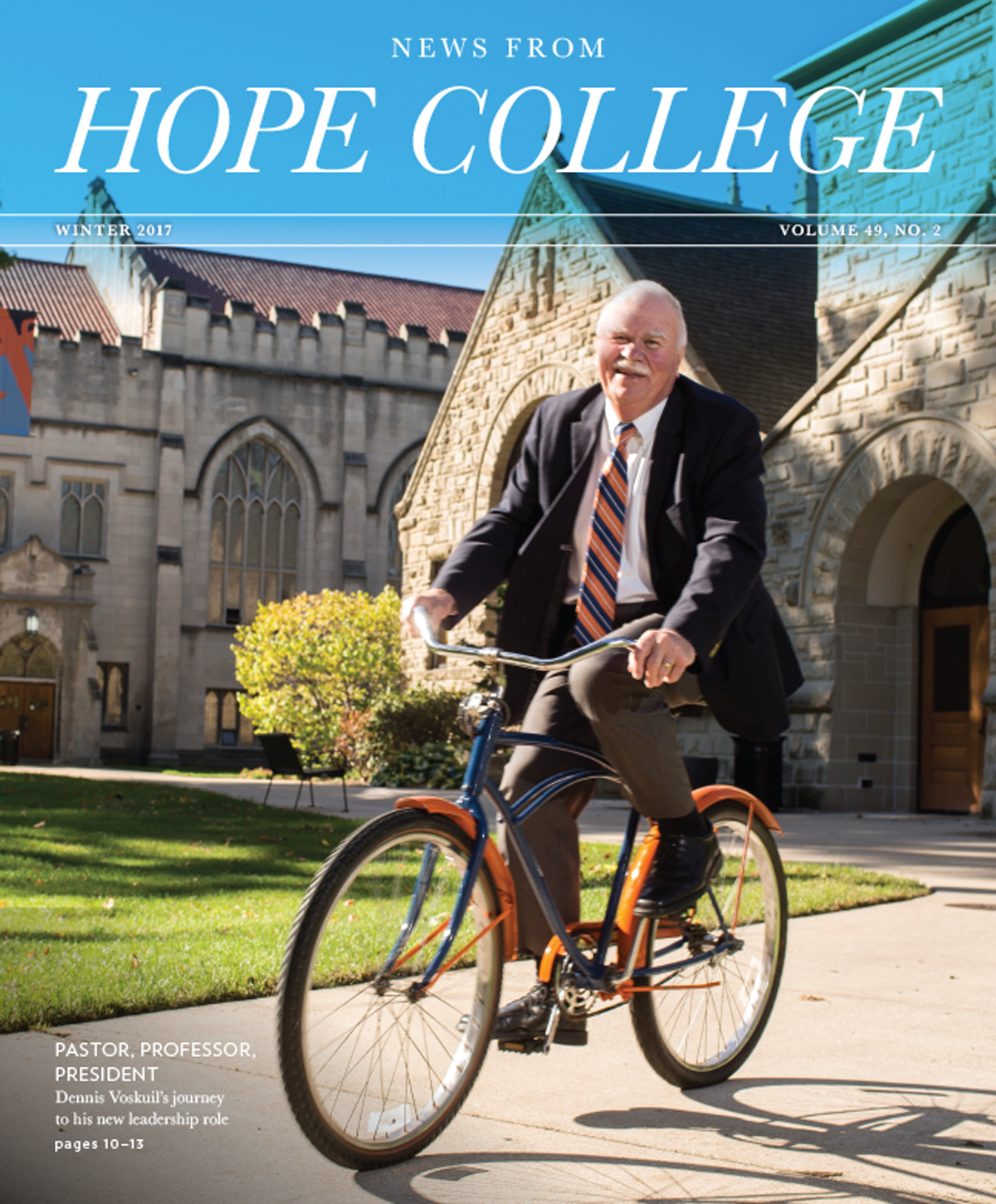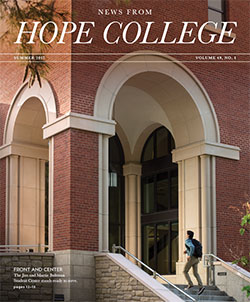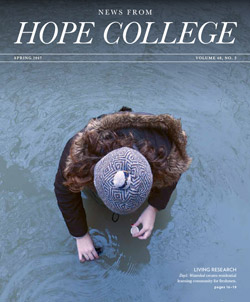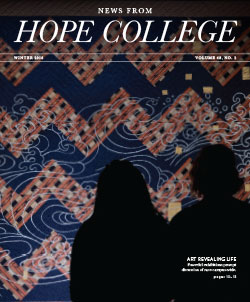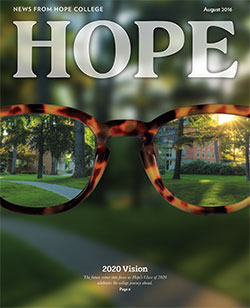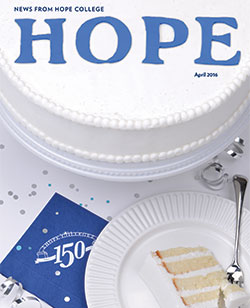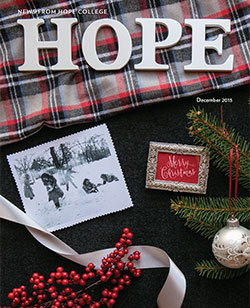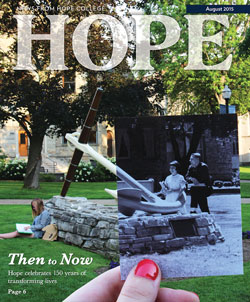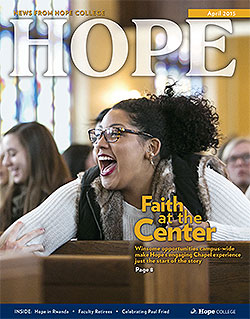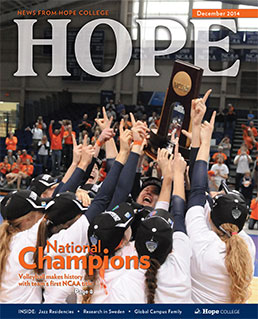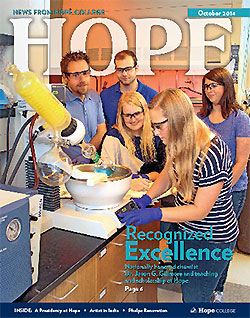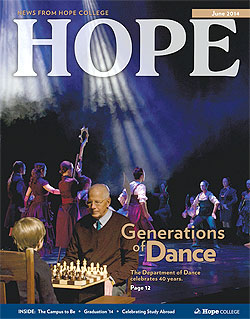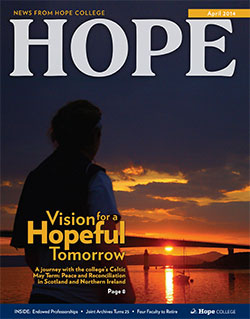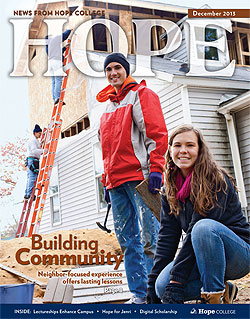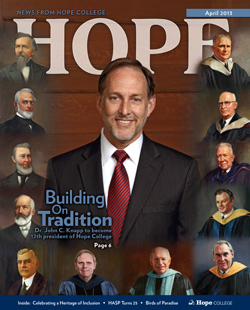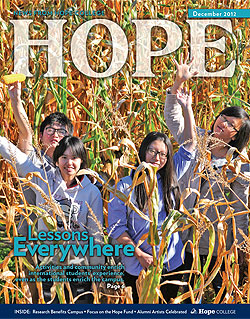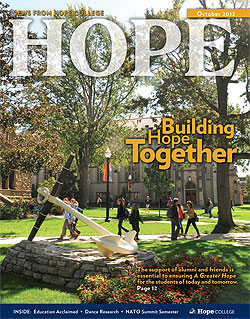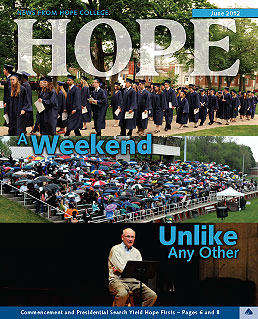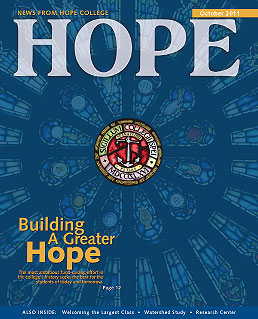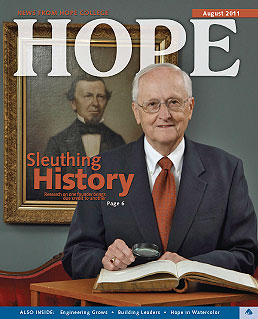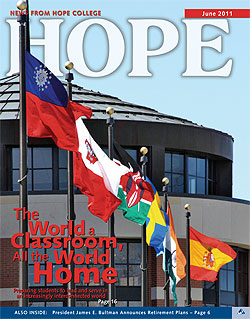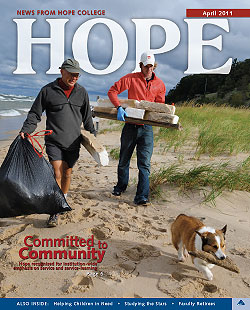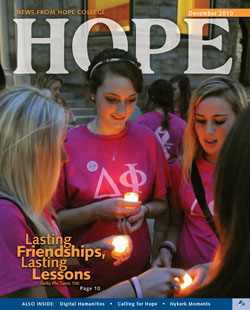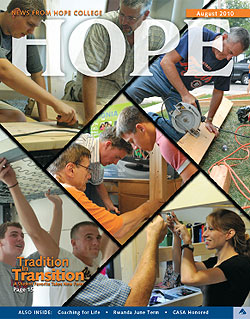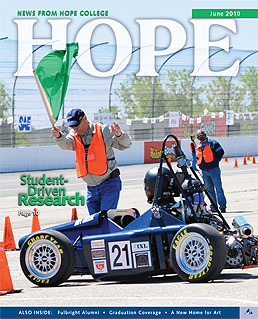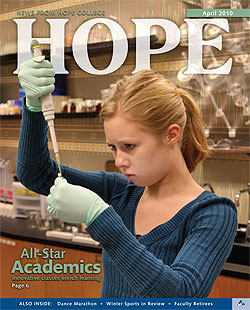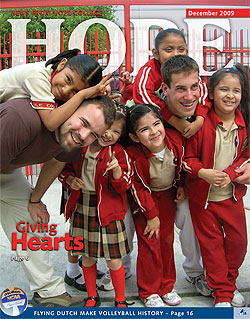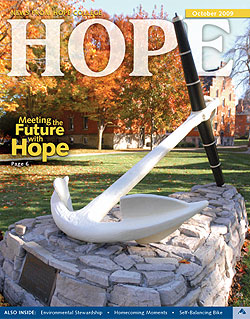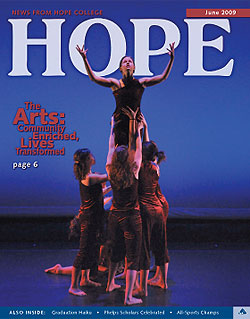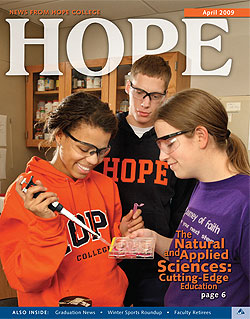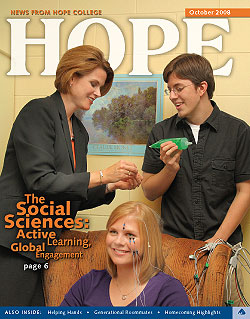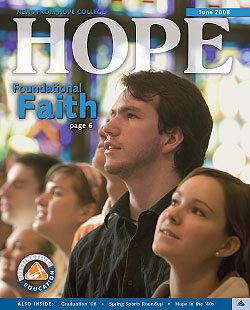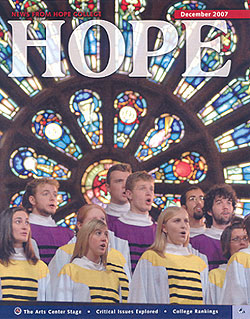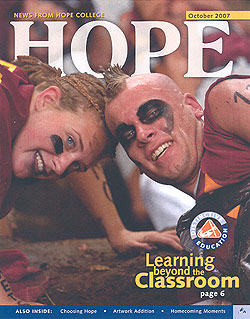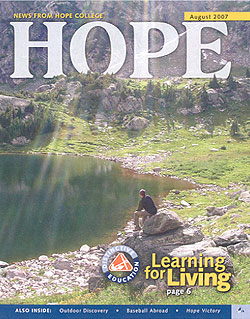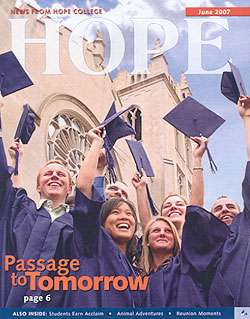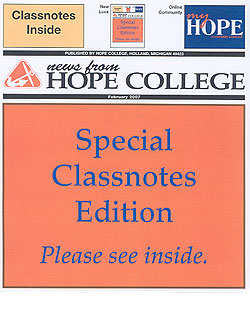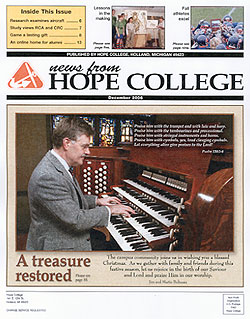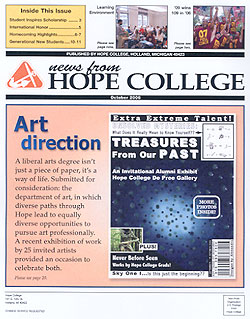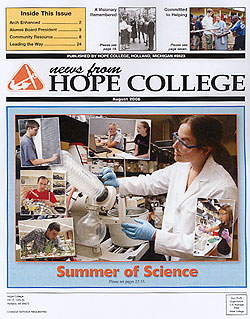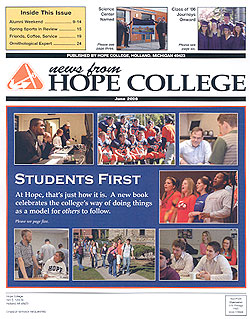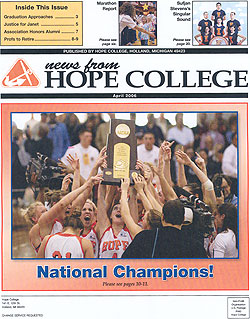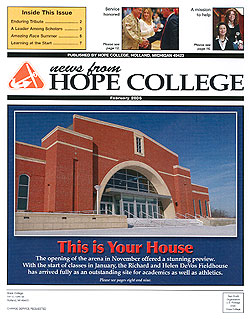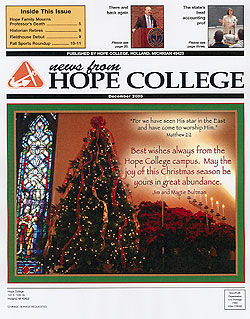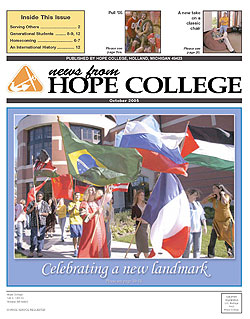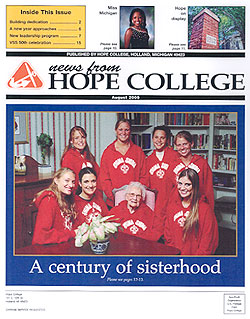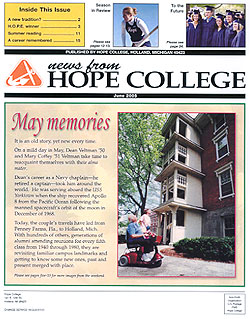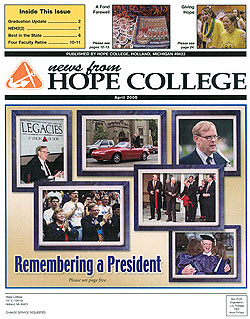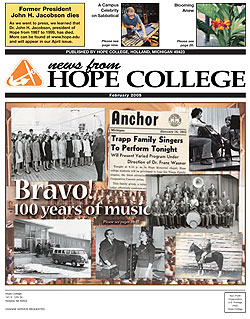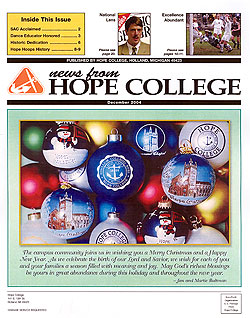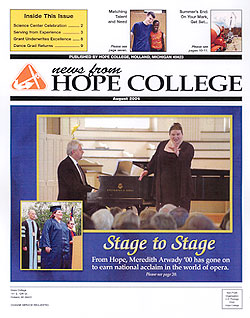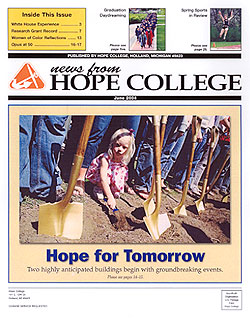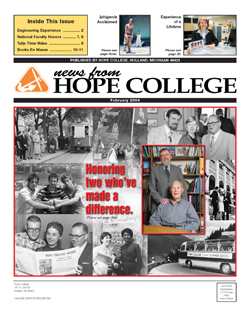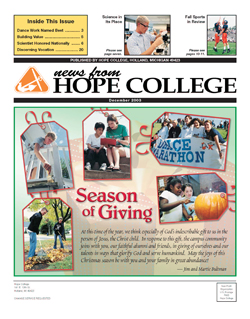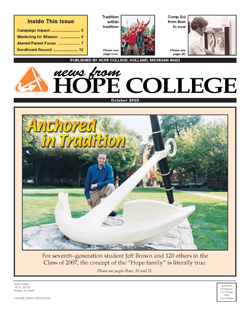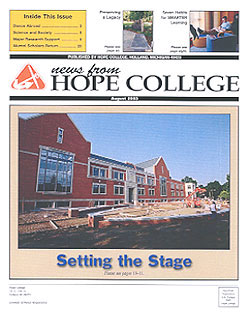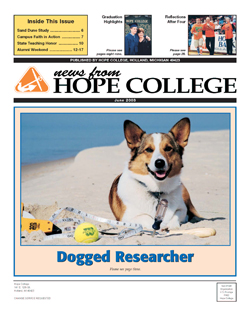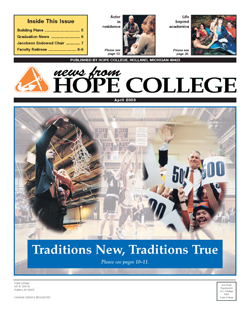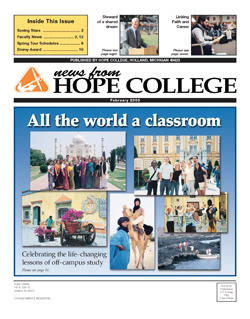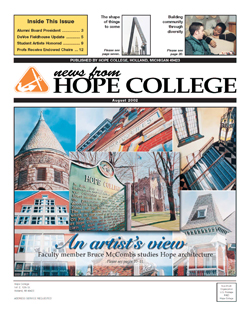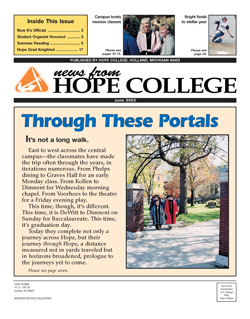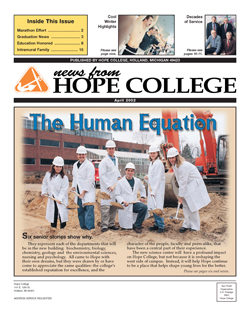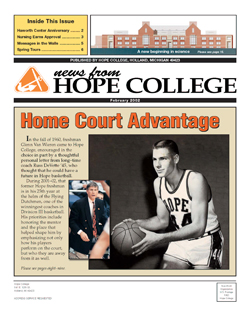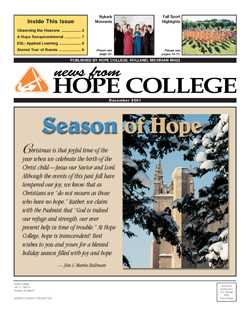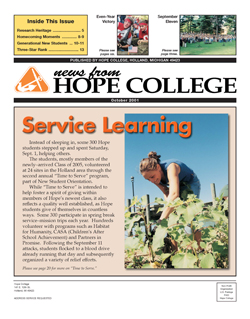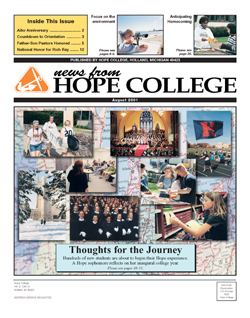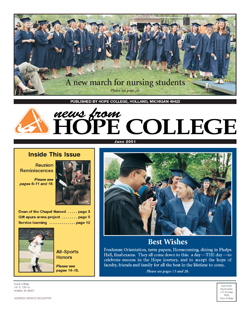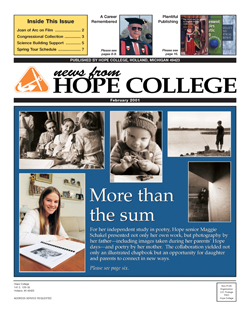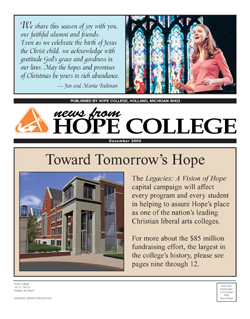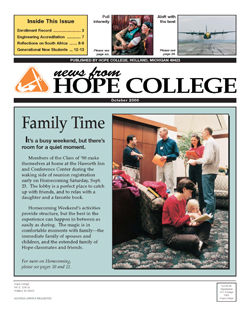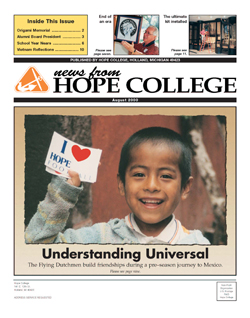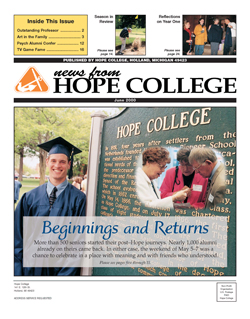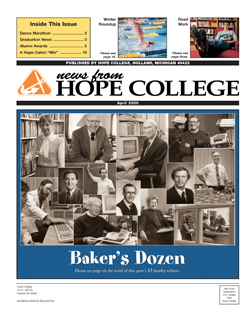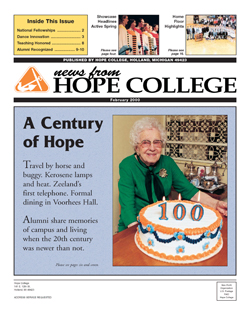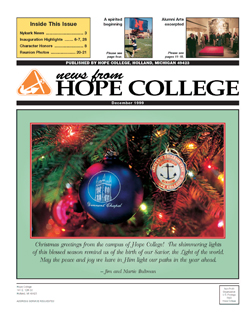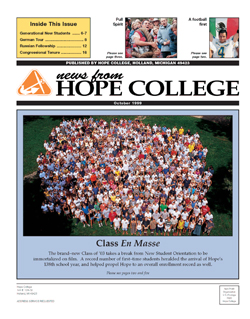On Display: Selections from an Interesting Life
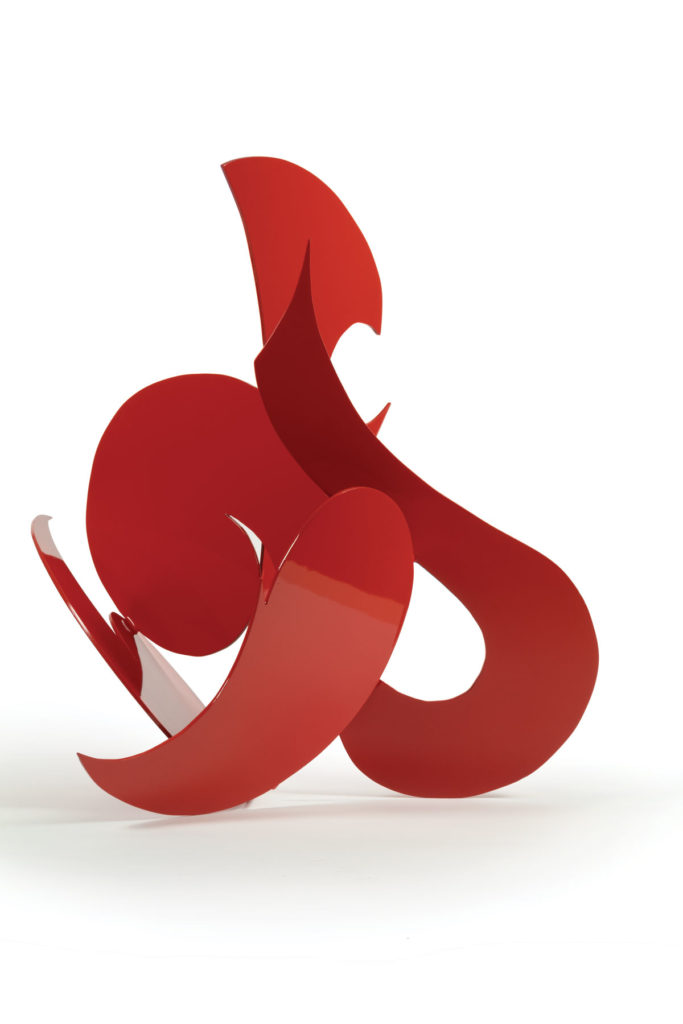
Alexander Liberman (American, born Ukraine 1912-1999)
Painted steel
Loan from the M.L. Brummel Collection
A new exhibition opening at Hope’s Kruizenga Art Museum this fall reflects the lasting power of the college experience — and the unexpected ways that even one part of it can enrich a life for the 60-plus years (and counting) that follow.
“Color, Texture, Form: Modern European and American Art from the Brummel Collection” will feature 62 paintings, drawings, prints and sculptures selected from the personal collection of Hope alumnus, avant-garde textile designer and world traveler Mike Brummel ’57. Opening on September 10 and continuing through December 11, the exhibition will tell two stories: of the traditions represented by the pieces on display, and — indirectly — of Brummel.
“Mike’s collection is a very personal collection,” said Charles Mason, who is the director and Margaret Feldmann Kruizenga Curator of the Kruizenga Art Museum.
“I tried to organize the exhibition in a way that the collection shows something of broader historical developments of art, but also connected to Mike’s life,” Mason said. “For me, that’s one of the ways that art can be read like a text, like a book. It gives you insight into people’s lives and the interesting things they’ve done. And Mike has had a very interesting life.”
Brummel’s interesting life began in West Michigan, where he was born and raised and where he still has family. He came to Hope College with the intention of staying for just two years of general education before moving on to a design school — but he loved it so much that he stuck around for the full four years. He also joined the Knickerbocker fraternity, and he has maintained strong connections with many members since. “They were very formative during my four years on campus,” he said.
The summer after he graduated from Hope College with a degree in biology (Hope didn’t have a formal art major at the time), Brummel joined the Vienna Summer School with Dr. Paul Fried ’46, who he remembers fondly as “a great mentor, a great man.” In fact, Brummel credits the genesis of his interesting life to this first visit to Europe.
“After Vienna, I stayed in Europe to travel,” he said. “We went straight back to Paris, which is such a beautiful city.” All in all, he spent about two months in Europe that summer.
When he returned to the United States, Brummel studied at the Pratt Institute in New York City. He completed his studies at Pratt in 1960 and made his principal home in New York. While he was still in his 20s, he co-founded two companies that specialized in designing and producing textiles, wallpapers and home furnishings.
The first of these, Kirk-Brummel, was a high-end business that served architects and designers in showrooms throughout the U.S. — Miami, New York, Chicago, Los Angeles — and in Europe. “It was a modernist company, and we received a lot of publicity, a lot of press,” he said. “It was very avant-garde.”

Léopold Survage (French, born Finland 1879-1968)
Oil on canvas
Loan from the M.L. Brummel Collection
He also founded Raintree Designs, which served a more mass-market clientele through distributors. Here, he introduced the fabrics and wall coverings by designer Laura Ashley.
Both of his businesses “became very prominent, contemporary companies in the United States and abroad as well,” he said. Brummel designed wallpapers for the president of Mexico and worked with famous English novelist Dame Barbara Cartland. He was involved with textile mills across Europe and established a second home in Paris. And he did some work in real estate, including luxury restoration work on brownstones and townhouses in Brooklyn Heights.
Through it all, “the exciting thing has always been art,” he said. “Art has always influenced me in my textile work.”
His business travels on two continents and his connections in the art and design world perfectly suited his interests as an art collector, and he developed relationships with auction houses on both continents. Brummel bought his first artwork in Michigan when he was 18, and he hasn’t stopped in the 70 years since.
“Color, Texture, Form: Modern European and American Art from the Brummel Collection” at the Kruizenga Art Museum will tell two stories: of the traditions represented by the pieces on display, and — indirectly — of the path Mike Brummel ’57 has traveled since being inspired by his participation in the Vienna Summer School more than 60 years ago.
“I’m always hunting for wonderful things,” he said. “It’s been a fascinating life. It wasn’t a 9-to-5 life. I covered a lot of territory and had a lot of wonderful experiences.”
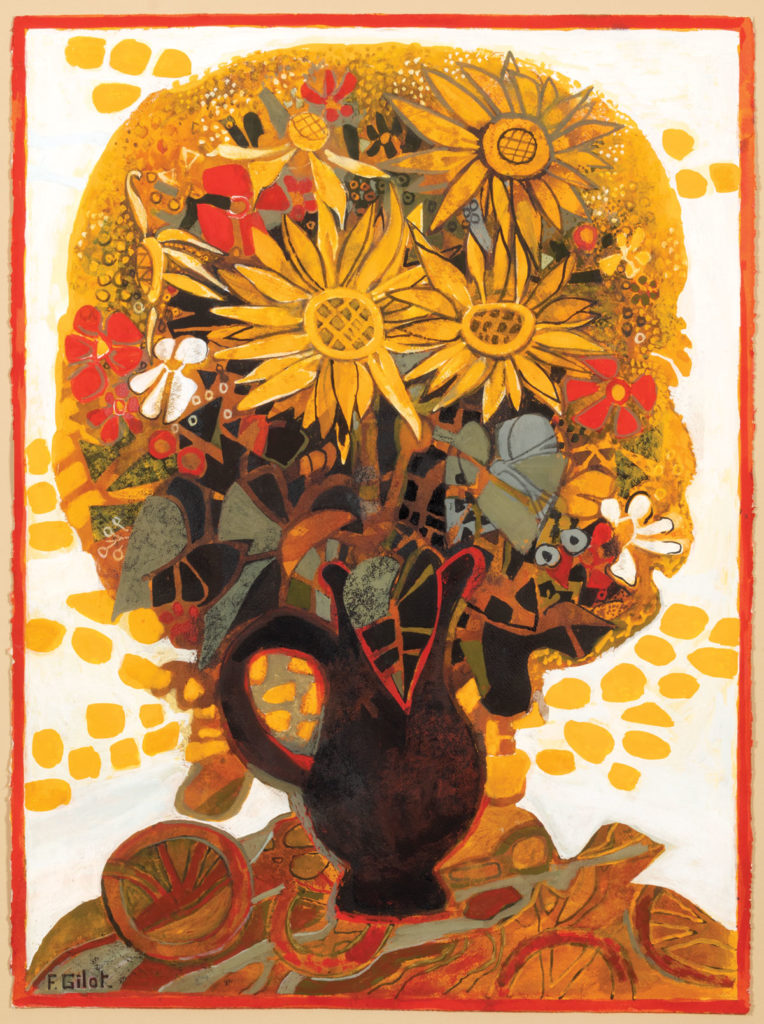
Françoise Gilot (French, born 1921)
Gouache on paper
Loan from the M.L. Brummel Collection
Today, Brummel splits his time between a Central Park apartment in New York City and a home in Bucks County, Pennsylvania. Talking to him about his life is like reading a laundry list of names and places: New York, Paris, Switzerland, Mexico, Southern California, the Netherlands. But, he says, “like a homing pigeon, I keep coming back to West Michigan.”
He’s pleased to see his artwork coming back to West Michigan, too. “Color, Texture, Form” serves as an overview of the development of art in two cities, New York and Paris, both of which served as anchoring points for the wide-ranging orbit of Brummel’s life.
“The New York School of abstraction is a very favorite school of mine, as well as artists from the School of Paris and earlier,” Brummel said.
One part of the exhibition focuses on the School of Paris from the 1920s through the 1970s, a period marked by cubism and later developments in perspective, deconstruction and surrealism. Another part features the New York School from the 1940s to the early 1990s — think here of abstract and non-representational art from artists like Jackson Pollock.
“Part of what I’m trying to do with this exhibition is to tell the story of Mike as a collector, but also of these two schools of artists and their impact on the world,” Mason said.
Serving as a bridge between the two schools, and forming the third part of the exhibition, are selections of artwork by François Gilot, who lived in both Paris and New York and who has contributed to both schools over a decades-long career. Gilot will celebrate her 100th birthday this November. An exceptional artist in her own right, Gilot also lived for nearly 10 years with Pablo Picasso, with whom she had two children.
According to both Mason and Brummel, Gilot is experiencing something of a renaissance in the art world. “She’s such a fascinating artist,” Mason said. “She’s a strong woman who made her own way in a very male-dominated art world.”
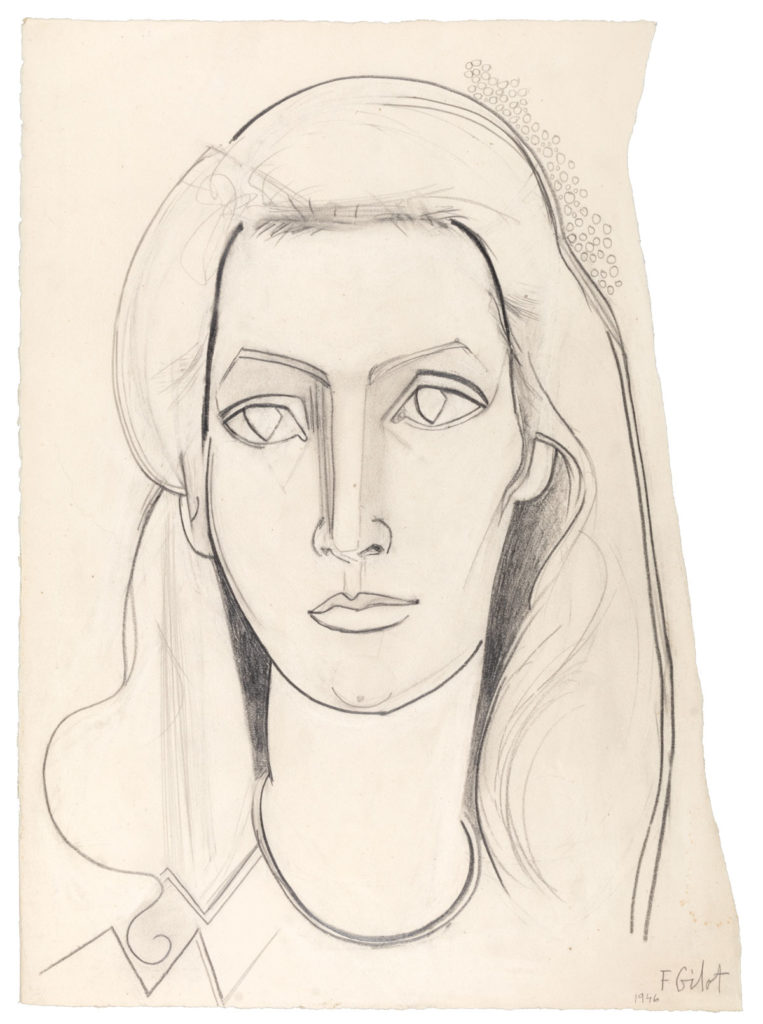
Françoise Gilot (French, born 1921)
Graphite on paper
Loan from the M.L. Brummel Collection
In May 2021, Gilot’s Paloma à la Guitare (1965) sold for $1.3 million at a Sotheby’s auction that exclusively featured work by female artists.
Brummel began collecting pieces by Gilot after seeing her work at a small gallery in Grand Rapids, Michigan. Later, the two became friends. “I’ve known her very well for many years. I was introduced to her through a well-known art curator and historian in New York,” he said. “I would see her in Paris. She maintained a wonderful studio in Montmartre.”
Through all his globetrotting, Brummel has remained a friend of Hope College, making contributions to the Kruizenga Art Museum’s permanent collection and donating a piece to the Nyenhuis Sculpture Garden. This new exhibition of pieces from his collection is just another way for Brummel to come home and to give back.
“I hope it’s inspirational,” Brummel said.
Development of the exhibition, “Color, Texture, Form: Modern European and American Art from the Brummel Collection” provided a valuable learning opportunity thanks to alumni support. Senior Grace Pettinger conducted related research and provided planning and label-writing assistance under the auspices of the art museum’s John H. Dryfhout ’64 Internship program.
